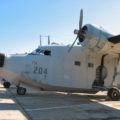
Aichi D3A | ||
|---|---|---|
| Country | Japan | |
| Role | Carrier-based dive bomber | |
| First flight | January 1938 | |
| Built | 1495 | |
The Aichi D3A Type 99 Carrier Bomber (Allied reporting name “Val”) is a World War II carrier-borne dive bomber. It was the primary dive bomber of the Imperial Japanese Navy (IJN) and was involved in almost all IJN actions, including the attack on Pearl Harbor. The Aichi D3A was the first Japanese aircraft to bomb American targets in the war, commencing with Pearl Harbor and U.S. bases in the Philippines, such as Clark Air Force Base. Vals sank more Allied warships than any other Axis aircraf.
Source: Aichi D3A on Wikipedia
| Aichi D3A Val Replica Walk Around | |
|---|---|
| Photographer | Vladimir Yakubov |
| Localisation | Capital City Airshow 2016, Sacramento |
| Photos | 76 |
Find kits on eBay:
Related kits:

The Aichi D3A was a Japanese carrier-borne dive bomber that saw action in the Pacific War during World War II. It was the primary dive bomber of the Imperial Japanese Navy (IJN) and was involved in almost all of the major naval engagements, including the attack on Pearl Harbor, the Battle of Midway, and the Battle of the Coral Sea. The D3A was also known by its Allied reporting name “Val”.
The D3A was designed by Aichi Aircraft Company in response to a 1936 specification issued by the IJN for a new dive bomber. It was a low-wing monoplane with a fixed undercarriage and a crew of two: a pilot and a rear gunner. The D3A had a distinctive inverted gull wing that improved visibility for the pilot and reduced drag. The D3A was powered by a single Nakajima Hikari radial engine that gave it a maximum speed of 390 km/h (240 mph) and a range of 1,475 km (917 mi).
The D3A carried a single 250 kg (550 lb) bomb under the fuselage and two 60 kg (130 lb) bombs under the wings. The D3A had two 7.7 mm (0.303 in) machine guns in the nose and one 7.92 mm (0.312 in) machine gun in the rear cockpit. The D3A had a dive brakes on the wings that allowed it to perform steep dives at speeds up to 550 km/h (340 mph). The D3A had a reputation for being sturdy and reliable, and could withstand considerable battle damage.
The D3A entered service in 1940 and soon proved its effectiveness as a dive bomber. It sank more Allied warships than any other Axis aircraft during the war, including five aircraft carriers, four battleships, two heavy cruisers, four light cruisers, and 23 destroyers. The D3A also participated in land-based operations, such as bombing airfields, ports, and industrial targets. The D3A was feared by Allied sailors and pilots, who nicknamed it “the bane of our existence”.
However, as the war progressed, the D3A became increasingly obsolete and vulnerable to newer Allied fighters. The D3A lacked armor protection, self-sealing fuel tanks, and adequate firepower. The D3A also suffered from a shortage of spare parts and experienced pilots. By 1944, the D3A was largely replaced by the more advanced Yokosuka D4Y Suisei (“Judy”) dive bomber. The remaining D3As were used for kamikaze attacks or training purposes until the end of the war.
Views : 2145









